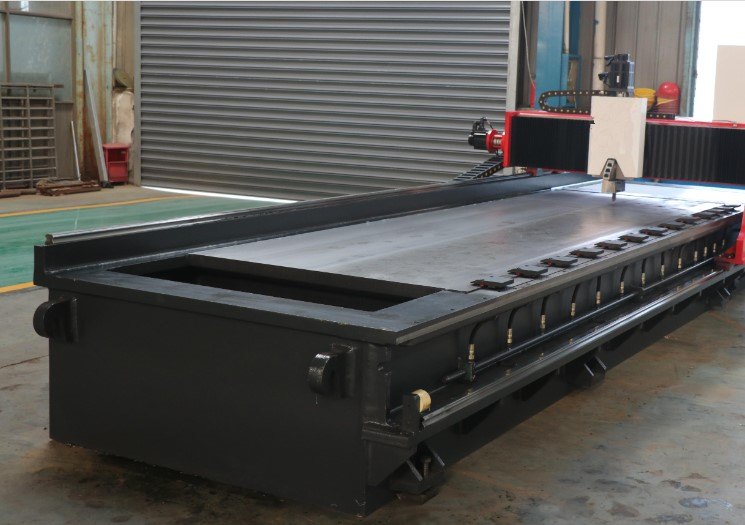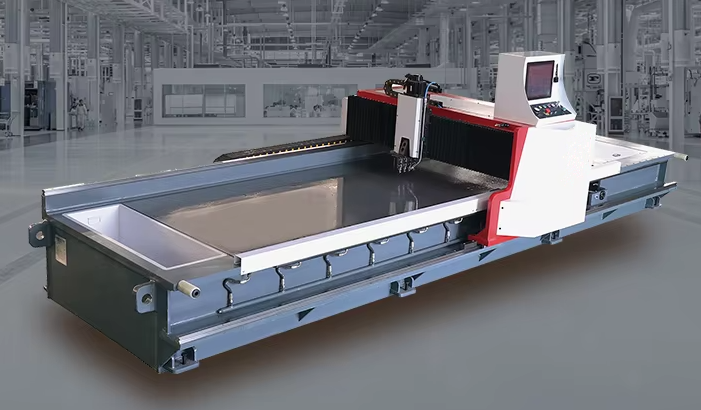Grooving Machine: A Professional Solution for Wood and Metal Processing
Introduction
A grooving machine is a versatile industrial tool widely used in precision cutting operations on both wood and metal materials. Whether in furniture manufacturing, construction, or the production of mechanical components, a grooving machine is key to enhancing work efficiency and quality.

Working Principle
A grooving machine operates by using high-speed rotating cutters to create the desired groove shape on the material surface. Depending on the application, the machine can be equipped with various types of cutters, such as straight blades, V-cutters, or radius cutters. Modern grooving machines typically feature precise depth and width adjustment systems, ensuring high accuracy in every cut.
Main Types and Features
Handheld Grooving Machines
- Portability: Compact and lightweight, easy to carry.
- Flexibility: Ideal for on-site work and small projects.
- Application Range: Suitable for small-batch processing of wood and soft metals.
Tabletop/Stationary Grooving Machines
- Stability: Mounted on a stable workbench, providing a firm working platform.
- High Precision: Offers higher positioning accuracy and repeatability.
- Production Capacity: Suitable for large-scale production and high-load operations.
- Safety Features: Equipped with emergency stop buttons, protective guards, and other safety measures.
CNC (Computer Numerical Control) Grooving Machines
- Automation: Computer-controlled for highly automated processes.
- Multi-Axis Movement: Supports multi-axis motion for complex groove shapes.
- Programming Capabilities: Users can design graphics using CAD/CAM software and directly convert them into machining programs.
Material Applications
Wood Processing
- Furniture Manufacturing: Used for creating drawer slides, door panel edges, and other components.
- Interior Finishing: Cutting grooves for skirting boards and floor installations, and window and door frame assembly.
- Custom Artwork: Fine carving and decorative trim work.
Metal Processing
- Construction Industry: Groove cutting for stainless steel window and door frames, aluminum curtain wall components.
- Mechanical Manufacturing: Various mechanical parts requiring guide rails, keyways, and other functional grooves.
- Electronic Components: Small, specific-shaped grooves on circuit boards.
Selecting the Right Grooving Machine
- Material Compatibility: Ensure the machine can handle the target material (e.g., hardwood, carbon steel, aluminum).
- Power Requirements: Choose an appropriate motor power based on the hardness and thickness of the material.
- Precision Needs: For applications requiring extremely high precision, consider using a CNC grooving machine.
- Maintenance Costs: Evaluate long-term maintenance costs, including cutter replacement frequency and the cost of consumables.
- Brand and Service: Choose a reputable brand and confirm the availability of after-sales service and technical support.
Safety Operation Guidelines
- Personal Protective Equipment (PPE): Wear safety glasses, dust masks, and hearing protection.
- Machine Inspection: Check the condition of the cutters, fasteners, and electrical connections before each use.
- Proper Clamping: Ensure the workpiece is securely clamped to the workbench to prevent movement.
- Cooling and Lubrication: Essential for metal processing; use appropriate coolant to reduce heat buildup.
- Cleaning and Maintenance: Regularly clean internal debris and keep the machine clean and properly lubricated.
Conclusion
Grooving machines play a crucial role in many industries due to their efficiency and precision. Whether in wood or metal processing, selecting the right grooving machine and following proper operating procedures are essential for maintaining product quality and ensuring safe operations. This professional guide aims to provide comprehensive information to help you better understand and utilize this important tool!

